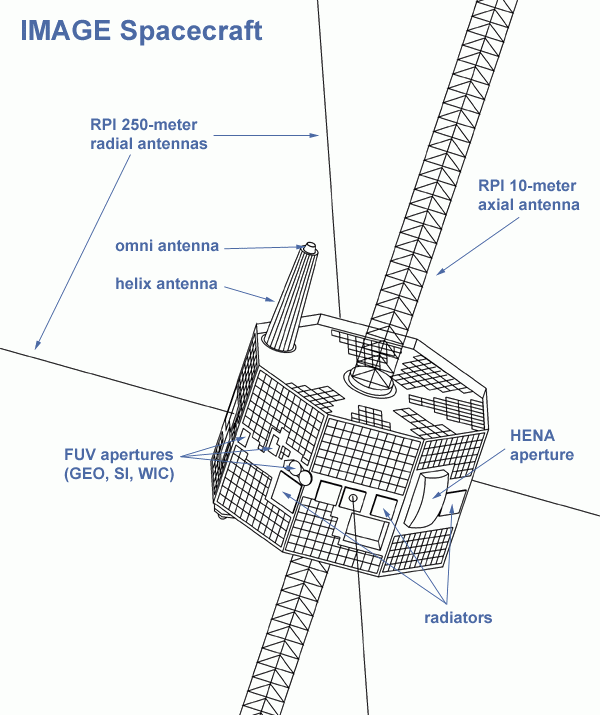Why Did NASA Lose Track Of IMAGE Satellite? Space Agency Explains Power Reboot

NASA may have cracked the mystery of why it lost touch with its IMAGE satellite more than a decade ago, only to be reunited with the orbiter when an amateur astronomer randomly found its signal last week.
The space agency said Feb. 2 that a little more than a year before the long-lost satellite went missing, IMAGE had experienced power issues and was operating on only one of its sides. But later it switched power back to its other half, unbeknownst to scientists.
“On Thanksgiving Day in 2004, the IMAGE spacecraft — at that time still fully functioning — underwent an unexpected power distribution reboot, after which the power returned only on one side — labeled the B side — of the unit,” NASA said. “Scientists involved in the mission concluded that the A side had failed, and proceeded for the rest of the mission exclusively with the B side. However, data from today’s telemetry with IMAGE indicate that the spacecraft’s power unit is now operating back on its A side.”
NASA lost track of the satellite in December 2005, when it didn’t receive IMAGE’s signals during a routine pass and the satellite was unresponsive to commands.
The officials are still unclear on why the reboot occurred and IMAGE switched back its operation, but “recent findings suggest that a reboot in some form has, in fact, occurred.”

IMAGE is short for Imager for Magnetopause-to-Aurora Global Exploration. The satellite, which launched about five years before its disappearance, was tasked with studying Earth’s magnetosphere. That study included photographing auroras, also known as northern lights — the colorful streams in the sky that crop up when electrically charged particles blown here from the sun interact with the gases in Earth’s atmosphere and its magnetic field.
The amateur radio astronomer who discovered the missing satellite, Scott Tilley, wrote on his website that IMAGE’s power system might have rebooted when it passed into Earth’s shadow, cutting the solar panels off from sunlight.
“Periodically the spacecraft will enter an eclipse and NASA surmised that this may trigger it to restart and apply power back to the communications system,” Tilley wrote last week. “That appears to have happened.”
When Tilley found IMAGE, he was reportedly looking for a signal from a classified U.S. government satellite called Zuma that was said to have failed to reach orbit but has sparked conspiracy theories about both its purpose and whether it really made it to space.
NASA has since confirmed that the satellite Tilley found was, indeed, IMAGE.

© Copyright IBTimes 2024. All rights reserved.











